How to Pick the Best AI Chatbot for SaaS Businesses

AI chatbots have revolutionized how SaaS businesses handle customer service. They offer instant, round-the-clock support, making interactions smoother and more efficient. Did you know nearly 70% of customers prefer chatbot SaaS for quick answers? By 2025, AI is projected to manage 95% of customer interactions across chat, email, and voice channels. These numbers prove their growing influence.
Choosing the right chatbot for your SaaS business isn't just about technology. It’s about aligning it with your goals and what your customers truly need. Personalized experiences, powered by natural language processing, can improve loyalty and revenue. A well-integrated chatbot also reduces costs and scales effortlessly as your business grows.
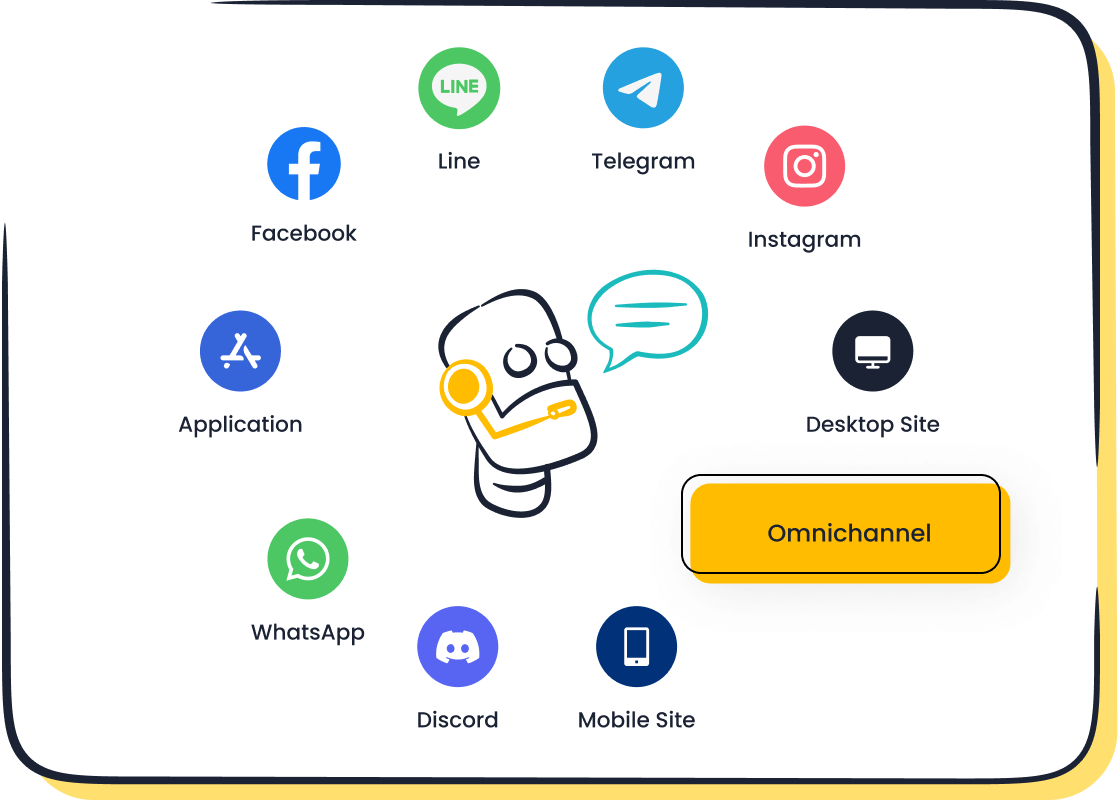
Sobot, with its AI-powered solutions, stands out by delivering multilingual, omnichannel support and customizable tools. It’s the ideal partner to transform your customer service while keeping operations efficient.
Identify Your SaaS Business Needs and Goals
Define Customer Service Objectives for SaaS
Before choosing a chatbot, you need to define what you want to achieve with your customer service. Are you aiming to improve response times, reduce churn, or boost customer satisfaction? Clear objectives help you measure success and guide your chatbot's setup.
For instance, did you know that a 5% increase in customer retention can boost profitability by up to 75%? Customers who feel supported are more likely to upgrade their plans or recommend your service to others. Proactive support, like answering questions before they’re even asked, can also reduce churn significantly.
| Evidence | Explanation |
|---|---|
| A 5% increase in retention | Boosts profitability by up to 75%. |
| Supported customers | More likely to upgrade and refer others. |
| Proactive support | Enhances retention and reduces churn. |
By setting clear goals, you’ll ensure your chatbot aligns with your business needs and delivers measurable results.
Understand Target Audience and Use Cases
Your chatbot should feel like it was made for your customers. To achieve this, you need to understand who they are and what they need. Are they tech-savvy or new to SaaS? Do they prefer self-service or human interaction? Knowing this helps you design a chatbot that fits seamlessly into their journey.
Case studies show that understanding your audience can lead to better engagement and trust. For example:
| Benefit | Description |
|---|---|
| Social Proof | Builds credibility by showing how others benefit from your product. |
| Problem-Solution Showcase | Demonstrates how your SaaS solves real-world challenges. |
| Relatable Narratives | Helps customers see how your solution fits their needs. |
| Sales Enablement | Gives your sales team tools to close deals effectively. |
| SEO Value | Improves search rankings with detailed case studies. |
When you know your audience, your chatbot can deliver personalized experiences that drive loyalty and conversions.
Prioritize Scalability and Long-Term Growth
Your SaaS business is growing, and your chatbot should grow with it. Scalability ensures your chatbot can handle increasing customer demands without breaking a sweat. It’s not just about managing more queries; it’s about doing so efficiently while maintaining quality.
Here’s why scalability matters for long-term growth:
- Customer feedback helps you refine your product and meet evolving needs.
- Proactive engagement keeps customers happy, improving retention rates.
- Accurate financial forecasting ensures you allocate resources wisely as you scale.
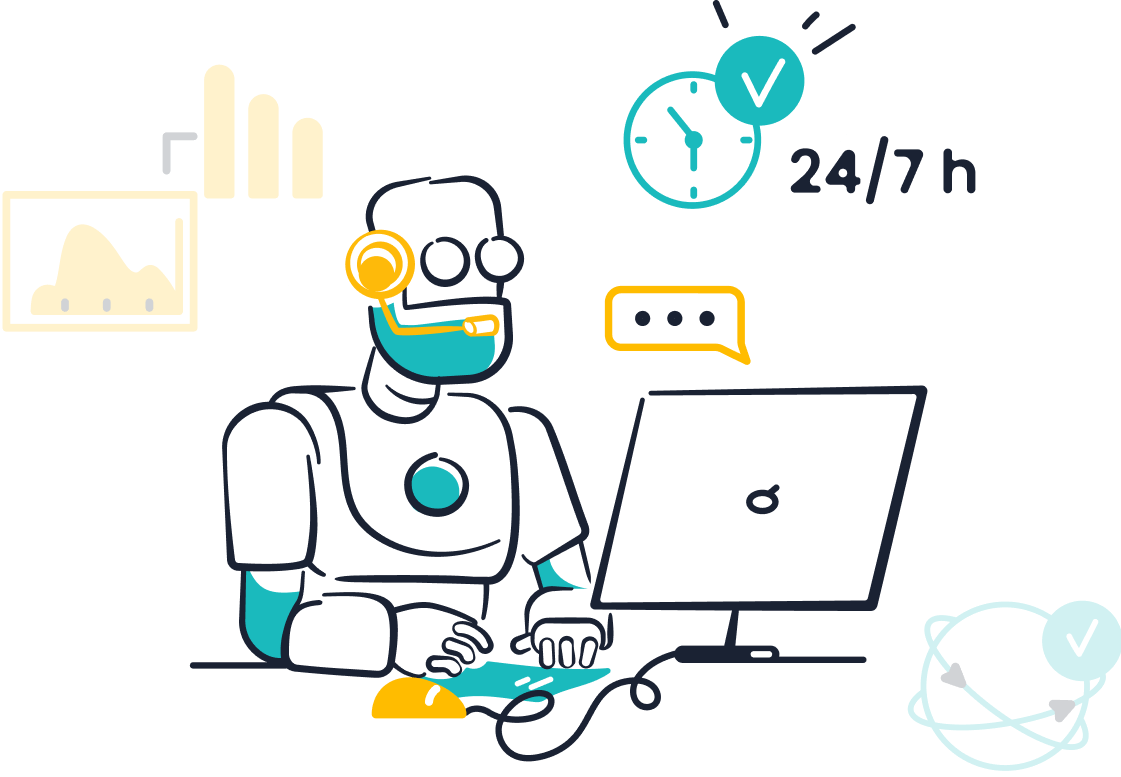
Sobot’s chatbot is built for scalability. It operates 24/7, handles multiple languages, and integrates seamlessly with your SaaS ecosystem. Whether you’re a startup or an enterprise, it adapts to your needs, ensuring smooth operations as you grow.
Compare Chatbot Types and Features
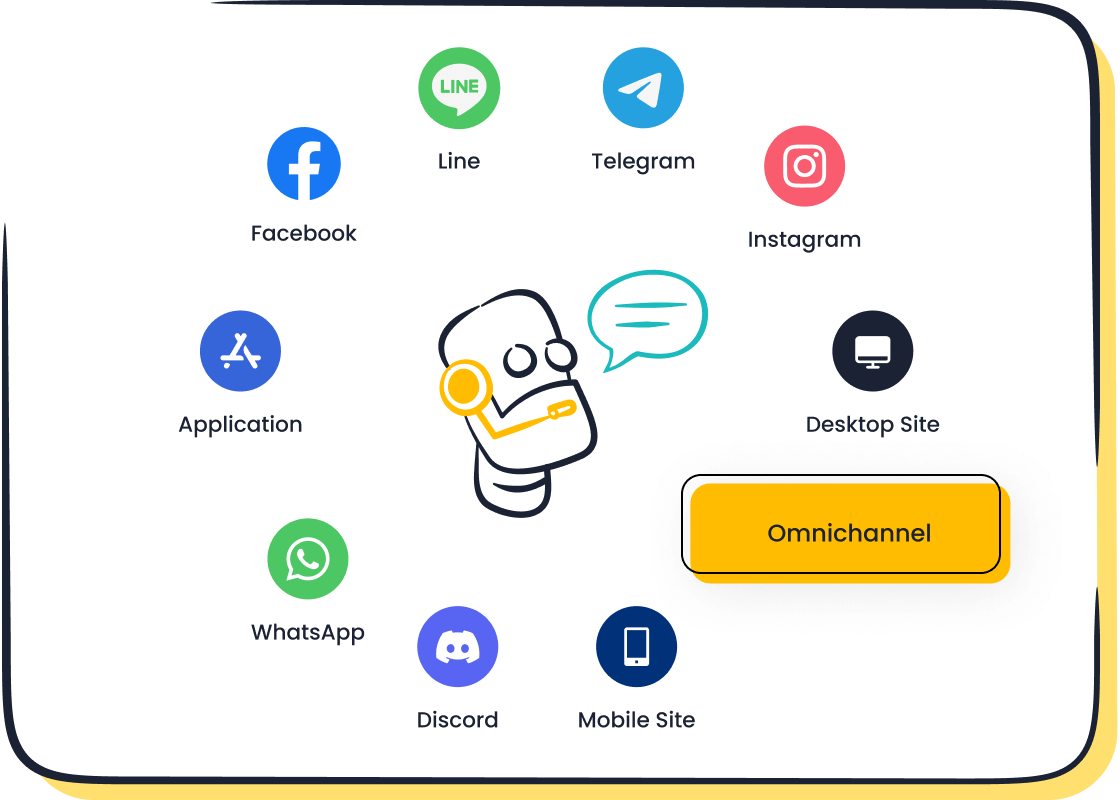
Rule-Based vs. AI-Powered Chatbots for SaaS
When choosing a chatbot for your SaaS business, understanding the difference between rule-based and AI-powered chatbots is crucial. Rule-based chatbots operate on predefined scripts and workflows, while AI-powered chatbots use machine learning and natural language processing to deliver dynamic, personalized interactions.
Here’s a quick comparison to help you decide:
| Feature | Rule-based Chatbots | AI-powered Chatbots |
|---|---|---|
| Operation | Uses predefined scripts and workflows | Utilizes machine learning and natural language processing |
| Interaction | Limited to specific queries | Offers dynamic and personalized interactions |
| Learning Capability | Static, requires manual updates | Learns from interactions and improves over time |
| Response Type | Follows a decision tree, providing structured responses | Generates contextually relevant responses based on intent |
| Use Case Suitability | Best for simple, frequently asked questions | Ideal for complex customer engagement |
AI-powered chatbots, like Sobot’s AI customer service bots, excel in handling complex queries and adapting to customer needs. They learn from every interaction, improving over time to deliver smarter responses. For SaaS businesses aiming for scalability and efficiency, AI chatbots are the clear choice.
Key Features to Look for in a Customer Service Chatbot
Not all chatbots are created equal. To pick the best one for your SaaS business, focus on features that enhance customer experience and operational efficiency.
Here are some must-have features:
- 24/7 Availability: Customers expect round-the-clock support. A chatbot that operates full-time ensures no query goes unanswered.
- Multilingual Support: If your SaaS business serves a global audience, multilingual capabilities are essential. Sobot’s chatbot supports multiple languages, making it ideal for international markets.
- Omnichannel Integration: Your chatbot should work seamlessly across platforms like WhatsApp, SMS, and email. This ensures consistent customer experiences.
- Proactive Engagement: Features like push messaging and real-time intent assistance can boost conversions by 20%.
- Analytics and Reporting: Insights into chatbot performance help you optimize customer interactions and measure ROI.
According to surveys, 64% of internet users consider 24-hour service a key feature, while 75% of business owners report improved customer experiences with AI chatbots. These features aren’t just nice-to-have; they’re essential for delivering top-notch customer service.
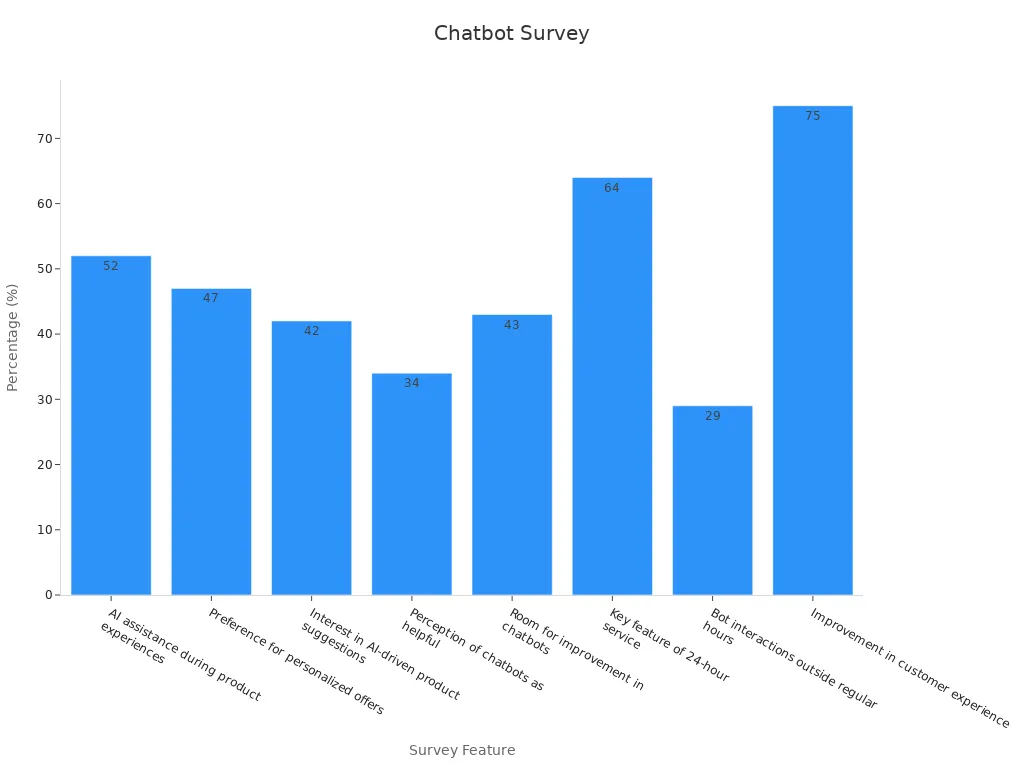
Customization and Personalization Capabilities
Your SaaS customers want to feel valued. Customization and personalization are key to achieving this. A chatbot that adapts to individual preferences and provides tailored responses can significantly improve customer satisfaction.
For example, over 70% of users report positive experiences when interacting with personalized chatbots. Sobot’s AI customer service bots allow you to customize workflows without coding, making it easy to align the chatbot with your brand voice and customer needs.
| Metric | Value/Insight |
|---|---|
| Positive user experience | Over 70% of users report a positive experience when interacting with chatbots. |
| Customer support availability | Chatbots provide 24/7 support, enhancing customer satisfaction. |
| Operational efficiency | ECHO reports significant ROI savings by resolving more chats without live agents. |
Personalization isn’t just about addressing customers by name. It’s about understanding their intent and delivering solutions that feel tailored to them. With Sobot’s chatbot, you can achieve this effortlessly, boosting customer loyalty and retention.
Ensure Seamless Integration with SaaS Ecosystems
Compatibility with CRM, Helpdesk, and Other Tools
Your chatbot should work effortlessly with the tools you already use. Whether it’s your CRM, helpdesk, or other SaaS platforms, seamless integration ensures your systems stay connected and your workflows remain uninterrupted. Imagine a chatbot that not only answers customer queries but also updates your CRM with every interaction. This creates a unified view of your customers, making it easier to deliver personalized experiences.
Take a look at how integration can transform industries:
| Industry | Integration Example | Outcome |
|---|---|---|
| E-commerce | An online retail store integrated a chatbot with its CRM for personalized recommendations. | 30% uplift in average order value. |
| SaaS | A software startup used a chatbot for 24/7 technical support, with CRM tracking issues. | Reduced user complaints by 40%. |
| Financial Services | A bank implemented an AI chatbot for loan inquiries, integrating with CRM for real-time checks. | Significantly cut down approval cycles. |
| Healthcare | Clinics utilized chatbots for appointment scheduling, integrating data into CRM. | Improved patient record management and communication. |
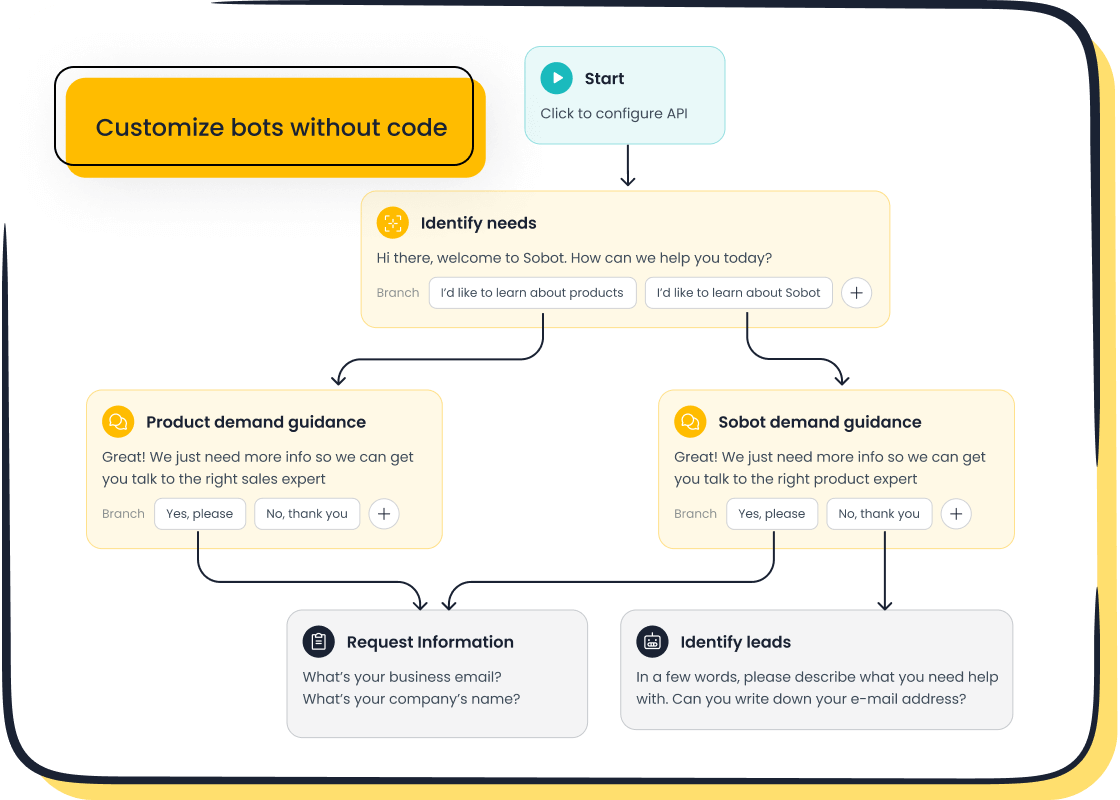
Sobot’s AI customer service solutions excel in compatibility. Its chatbot integrates seamlessly with CRM systems, helpdesk tools, and other SaaS platforms, ensuring your workflows stay smooth and your customer data remains accessible.
API and Webhook Support for SaaS Platforms
APIs and webhooks are the backbone of modern integrations. They allow your chatbot to communicate with other systems, enabling real-time updates and event-driven interactions. With API and webhook support, your chatbot can sync data across platforms, trigger actions based on customer behavior, and provide instant responses.
Here’s why API and webhook support matter:
- Improved User Experience: Webhooks provide real-time updates, ensuring customers always see the latest information.
- Simplified Data Syncing: APIs keep your data consistent across systems, reducing manual errors.
- Flexibility and Customization: Webhooks can be tailored to trigger specific events, making integrations more versatile.
- Instant Data Updates: Real-time syncing ensures your chatbot reflects changes immediately, enhancing customer satisfaction.
- Event-Driven Applications: Webhooks enable systems to respond dynamically to user actions, creating a more interactive experience.
Sobot’s AI customer service platform leverages advanced API and webhook capabilities to integrate with SaaS ecosystems effortlessly. Whether you’re managing customer inquiries or automating workflows, Sobot ensures your chatbot adapts to your needs and delivers seamless integration.
Workflow Automation and Data Synchronization
Automation is the secret to efficiency. By automating workflows, your chatbot can handle repetitive tasks like data entry, inventory tracking, and calendar management. This reduces human errors and frees up your team to focus on more strategic activities.
Before AI workflow automation, businesses struggled with inconsistent processes and longer wait times. After implementing automation, they saw significant improvements:
| Before AI Workflow Automation | After AI Workflow Automation |
|---|---|
| Manual and inconsistent customer and employee experiences, time-consuming | Personalized employee experiences with auto document collection |
| Costly human errors, mistakes in processing orders, and lost customers | Streamlined routine tasks of data entry, inventory tracking, and calendar management |
| Repetitive queries, longer wait times | Intent-based routing with proactive chatbot support |
Sobot’s AI customer service solutions take automation to the next level. Its chatbot uses intent-based routing to connect customers with the right resources instantly. It also synchronizes data across systems, ensuring every interaction feels personalized and efficient. With Sobot, you can streamline operations, reduce errors, and deliver exceptional customer experiences.
Focus on User Experience and Design
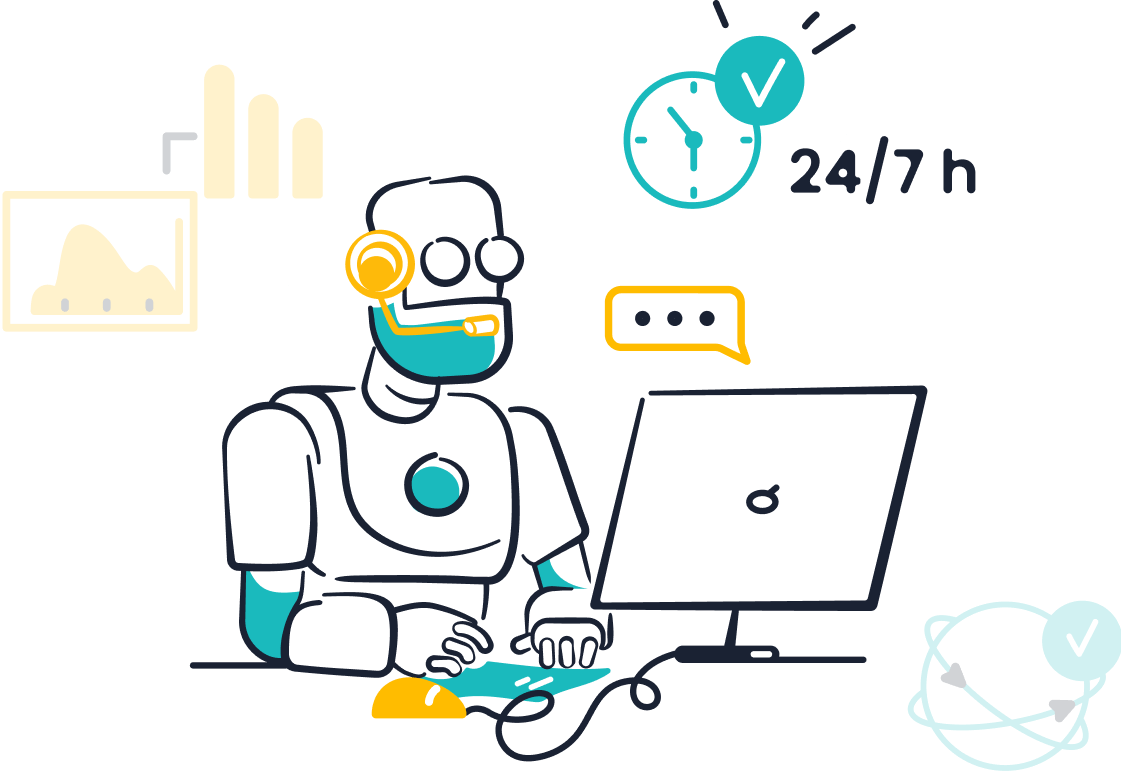
Intuitive Interfaces for SaaS Customers
Your SaaS customers want simplicity. An intuitive interface makes it easy for them to navigate your chatbot and find answers quickly. Research shows that improved information architecture (IA) enhances content discovery and usability. User testing and feedback play a vital role in identifying design flaws and refining the experience.
Take Salesforce, for example. After upgrading to the Lightning Experience, user productivity jumped by 41%, and conversion rates soared by 44%. Features like responsive design and interactive dashboards made the platform easier to use. Similarly, Jira’s interface overhaul streamlined workflows, improving satisfaction for new users.
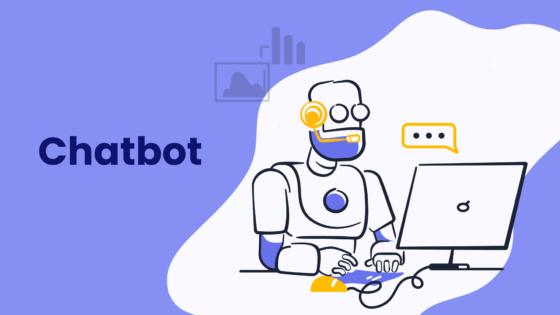
Sobot’s AI customer service chatbot is built with usability in mind. Its point-and-click interface lets you design workflows without coding. This ensures your customers can interact effortlessly, boosting satisfaction and retention.
Multi-Channel and Mobile Compatibility
Your customers interact across multiple platforms—websites, apps, social media, and messaging tools. A chatbot that works seamlessly across these channels ensures consistent support. Market research highlights the benefits of multi-channel deployment, including better data collection, trend tracking, and enhanced customer service.
| Benefit | Description |
|---|---|
| Data Collection | AI chatbots gather data on user location, device type, and interactions for audience segmentation. |
| Multi-Channel Deployment | Chatbots can be deployed on websites, mobile apps, social media, and messaging platforms. |
| Enhanced Customer Support | They provide 24/7 support, managing common queries and improving overall customer service. |
| Trend Tracking | Chatbots can identify common queries and issues, helping to outline trends and recurring problems. |
Sobot’s AI customer service solutions excel in multi-channel compatibility. Whether it’s WhatsApp, SMS, or email, Sobot’s chatbot ensures your customers receive consistent, personalized support wherever they are.
Human-Agent Handoff Best Practices
Even the smartest AI can’t replace human empathy. That’s why seamless handoff between AI and human agents is critical. Best practices include designing clear handoff points, using intuitive triggers, and training your team for real-world scenarios.
| Best Practice | Description |
|---|---|
| Design Seamless Handoff Points | Establish clear and fast methods for AI to transfer cases to human agents, ensuring customers do not have to repeat information. |
| Implement Intuitive Triggers | Use specific keywords or indicators to notify staff when a handoff is needed. |
| Provide Team-Wide Education | Train staff through role-playing to prepare them for real-world handoff situations. |
Sobot’s AI customer service chatbot uses intent-based routing to identify when a handoff is needed. It ensures customers transition smoothly to human agents without repeating themselves. This combination of AI efficiency and human empathy fosters trust and loyalty.
Test, Optimize, and Measure Chatbot Performance
Pilot Testing with Real SaaS Users
Before fully deploying your chatbot, running a pilot test with real users is one of the best practices you can follow. This allows you to identify gaps, refine conversation flows, and ensure the chatbot meets your customers’ expectations. Think of it as a dress rehearsal for your AI before it takes center stage.
Pilot tests often reveal surprising insights. For example:
- A telecom company’s chatbot resolved 68% of billing inquiries, reducing churn by 19% in six months.
- A travel bot flagged frustrated users for human intervention, boosting NPS scores by 35 points.
- A SaaS company discovered that 42% of “how-to” questions stemmed from one misunderstood feature. This insight led to an onboarding redesign that halved support tickets.
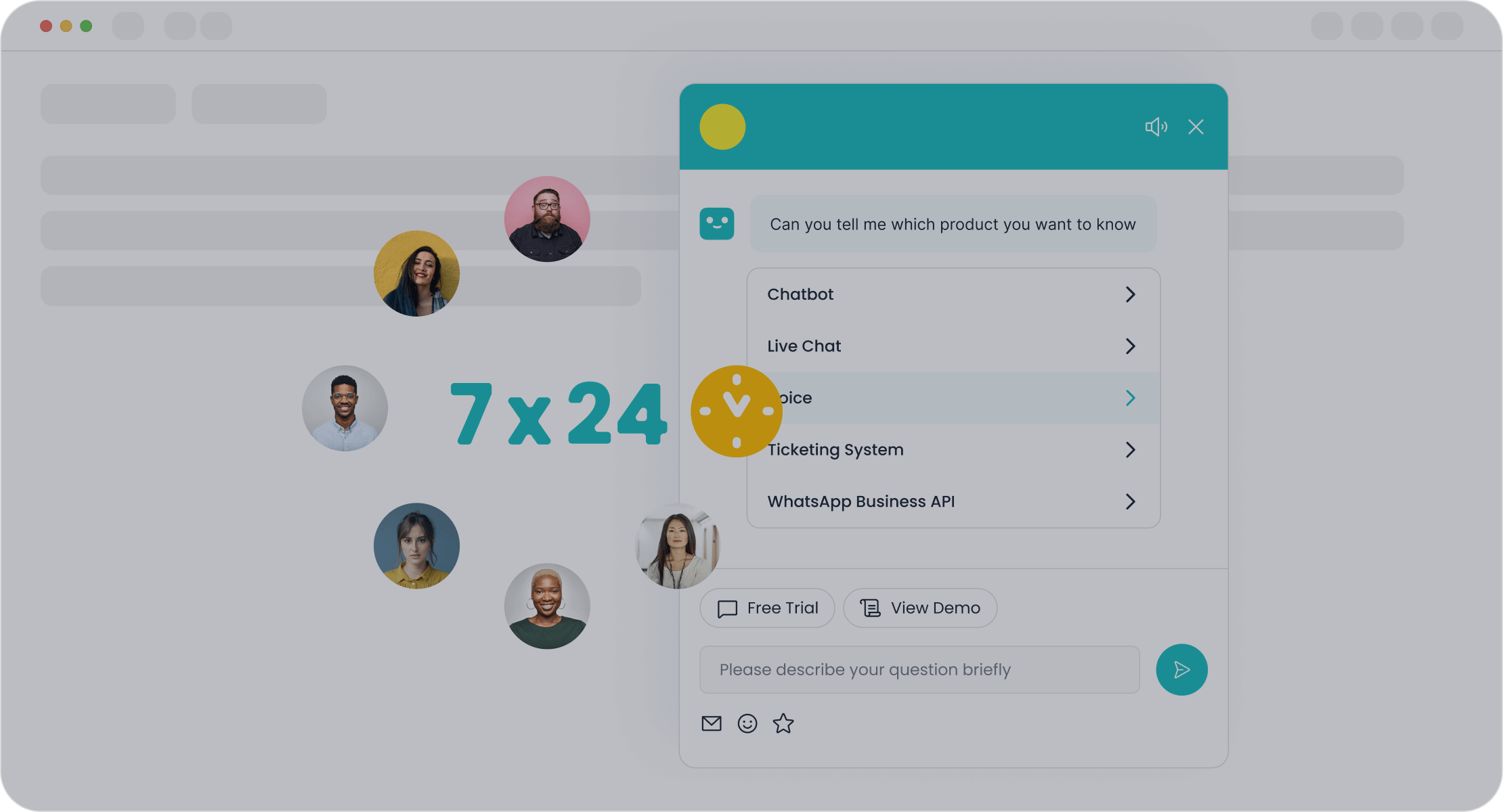
These results show how pilot testing can uncover valuable data to improve both your chatbot and your overall customer experience. With Sobot’s AI chatbot, you can easily test workflows and gather actionable feedback, ensuring your bot is ready to deliver top-notch service.
Analytics for Engagement and Effectiveness
Once your chatbot is live, analytics become your best friend. They help you measure engagement, effectiveness, and areas for improvement. By tracking metrics like satisfaction rates, escalation flags, and user confidence, you can see how well your chatbot performs.
Here’s an example of what analytics can reveal:
| Metric | Result |
|---|---|
| Participant Satisfaction | High satisfaction with chat content, length, and frequency |
| Engagement Rate | 150 participants enrolled with a 5% unenrollment rate |
| Self-Care Confidence Increase | 87% reported increased self-care confidence |
| Escalation Flags | 128 flags for hypoglycemia (41%), hyperglycemia (32%), medication issues (11%) |
These insights highlight the importance of monitoring your chatbot’s performance. Sobot’s AI solutions come with robust reporting tools, making it easy to track key metrics and optimize your bot’s impact.
Continuous Optimization Based on Feedback
Your chatbot isn’t a “set it and forget it” tool. It’s a dynamic system that thrives on continuous optimization. Regularly reviewing performance and retraining your AI ensures it adapts to changing customer needs and maintains high accuracy.
Here are some best practices for ongoing improvement:
- Test conversation flows and edge cases before and after deployment.
- Use automated regression testing to ensure updates don’t disrupt functionality.
- Monitor chats and analyze metrics to identify areas for refinement.
- Treat your chatbot like a product, iterating based on user feedback.
For instance, a bank scripts out various scenarios to ensure its chatbot meets all requirements. Coca-Cola uses regression testing to maintain performance, while an e-commerce company tracks cart abandonment to refine its bot’s responses. With Sobot’s AI chatbot, you can implement these strategies effortlessly, keeping your bot sharp and your customers happy.
Measure Success and ROI of Your Chatbot
Define Metrics for AI Customer Service Success
To measure the success of your chatbot, you need clear metrics. Start by defining what success looks like for your SaaS business. Is it happier customers, faster response times, or reduced costs? Metrics like Net Promoter Score (NPS), Customer Satisfaction (CSAT), and Customer Effort Score (CES) are great starting points.
For example, CES is particularly useful for tracking how easy it is for customers to get their issues resolved. Pair this with bot-specific metrics like containment rates (how often the chatbot resolves queries without escalation) to get a full picture of performance.
Tip: Tailor your metrics to your chatbot’s purpose. If your AI customer service bots focus on technical support, prioritize metrics like first-response time and resolution rates.
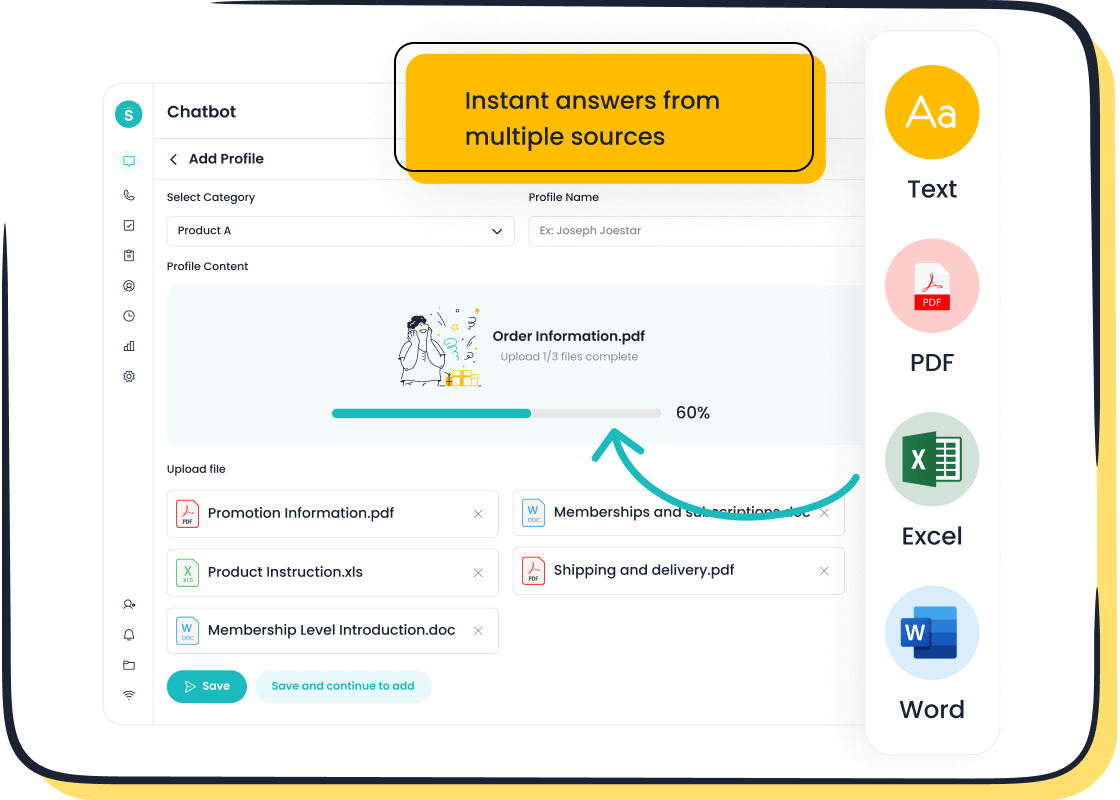
Sobot’s AI customer service bots make tracking these metrics simple. With built-in analytics, you can monitor engagement, satisfaction, and efficiency—all in one place.
Calculate Cost Savings and Efficiency Gains
Your chatbot isn’t just a tool; it’s an investment. Calculating ROI starts with understanding cost savings and efficiency gains. For instance, deflecting 20% of customer inquiries to AI can save up to $400,000 annually in contact center costs.
Here’s a breakdown of how ROI might look:
| Cost Analysis | Details |
|---|---|
| Total Investment | $30,000 (includes implementation, training, integration) |
| Annual Benefits | $90,000 (includes labor savings, increased sales, operational cost reductions) |
| ROI Calculation | 200% (calculated as [($90,000 - $30,000) / $30,000] × 100) |
Sobot’s AI customer service bots deliver efficiency gains by reducing first-response times from hours to minutes. They also boost productivity by automating repetitive tasks, freeing your team to focus on complex issues.
Align Chatbot Results with SaaS Business Objectives
Your chatbot should do more than answer questions. It should align with your business goals. For SaaS companies, this often means improving customer retention, increasing conversions, and driving revenue.
AI chatbots help by providing 24/7 support, guiding customers through purchasing decisions, and gathering valuable data. For example, improving the conversion rate from Marketing Qualified Leads (MQL) to Sales Qualified Leads (SQL) by just 1% can increase Monthly Recurring Revenue (MRR) by 5%.
Sobot’s AI customer service bots excel in aligning chatbot performance with business objectives. They analyze customer interactions to identify trends, improve marketing strategies, and enhance customer satisfaction. This ensures your chatbot contributes directly to your SaaS growth.
Choosing the right chatbot can transform your SaaS business. It’s not just about automating responses—it’s about aligning the chatbot with your goals and delivering what your customers need. Businesses using conversational AI report a 20% boost in customer satisfaction and a 58% ticket containment rate with an 87% success rate. Plus, chatbots can drive sales by 20% while cutting support costs significantly.
Sobot’s chatbot stands out as a reliable solution. It’s multilingual, customizable, and integrates seamlessly with your SaaS tools. Start small—run a pilot, measure its performance, and scale as your needs grow. With Sobot, you’re not just adopting a chatbot; you’re investing in smarter, more efficient customer service.
FAQ
What is the main purpose of a chatbot for SaaS businesses?
A chatbot helps SaaS businesses automate customer interactions. It answers common questions, provides 24/7 support, and improves efficiency. For example, Sobot’s chatbot can handle repetitive queries, saving up to 50% on support costs while boosting customer satisfaction.
How does a chatbot improve customer experience?
A chatbot offers instant responses, personalized interactions, and round-the-clock availability. Sobot’s chatbot, for instance, supports multiple languages and integrates with platforms like WhatsApp, ensuring seamless communication for global customers.
Can a chatbot integrate with existing SaaS tools?
Yes, most chatbots integrate with tools like CRMs and helpdesks. Sobot’s chatbot connects effortlessly with your SaaS ecosystem, syncing data and automating workflows to enhance operational efficiency.
Is coding required to set up a chatbot?
Not at all! Sobot’s chatbot features a point-and-click interface, making it easy to design workflows without coding. This user-friendly setup ensures you can deploy it quickly and start seeing results.
How do I measure the success of my chatbot?
Track metrics like resolution rates, customer satisfaction, and cost savings. For example, Sobot’s chatbot improves productivity by 70% and boosts conversions by 20%, making it easy to measure ROI.
See Also
Essential Tips for Selecting Top Chatbot Software
Key Considerations for Picking Chat Software This Year
2024's Leading Chatbots for Enhancing Your Website
